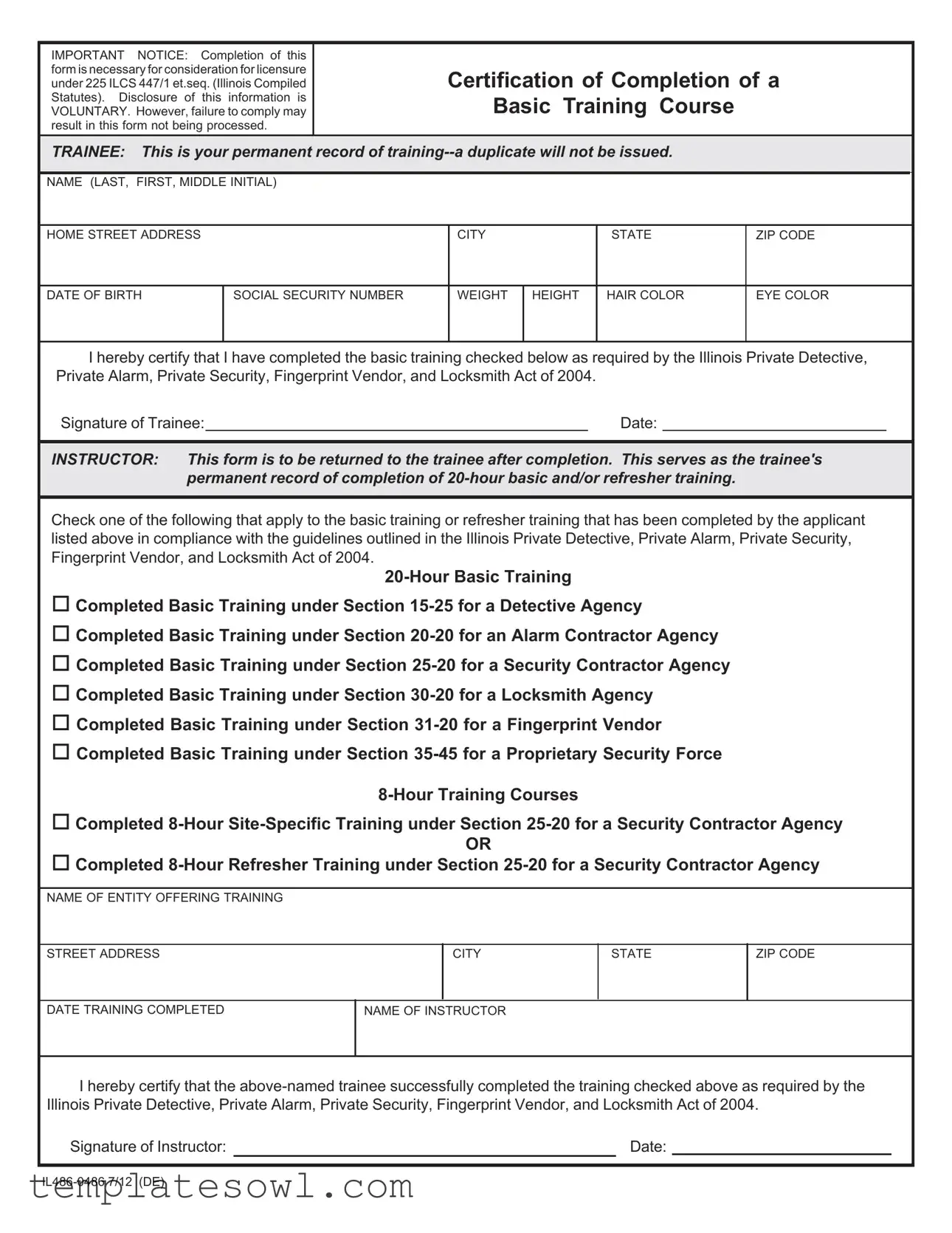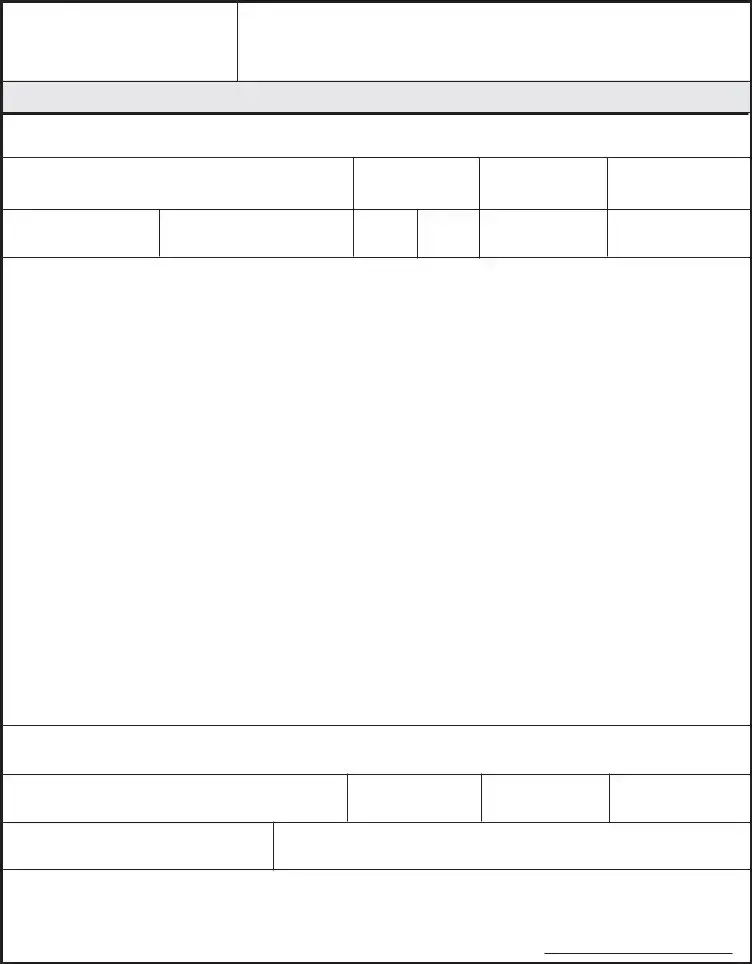IMPORTANT NOTICE: Completion of this form is necessary for consideration for licensure under 225 ILCS 447/1 et.seq. (Illinois Compiled Statutes). Disclosure of this information is VOLUNTARY. However, failure to comply may result in this form not being processed.
Certification of Completion of a
Basic Training Course
TRAINEE: This is your permanent record of training--a duplicate will not be issued.
NAME (LAST, FIRST, MIDDLE INITIAL)
I hereby certify that I have completed the basic training checked below as required by the Illinois Private Detective, Private Alarm, Private Security, Fingerprint Vendor, and Locksmith Act of 2004.
Signature of Trainee: |
|
Date: |
|
|
|
|
|
|
INSTRUCTOR: |
This form is to be returned to the trainee after completion. This serves as the trainee's |
|
permanent record of completion of 20-hour basic and/or refresher training. |
|
|
|
|
|
|
Check one of the following that apply to the basic training or refresher training that has been completed by the applicant listed above in compliance with the guidelines outlined in the Illinois Private Detective, Private Alarm, Private Security, Fingerprint Vendor, and Locksmith Act of 2004.
20-Hour Basic Training
Completed Basic Training under Section 15-25 for a Detective Agency
Completed Basic Training under Section 20-20 for an Alarm Contractor Agency
Completed Basic Training under Section 25-20 for a Security Contractor Agency
Completed Basic Training under Section 30-20 for a Locksmith Agency
Completed Basic Training under Section 31-20 for a Fingerprint Vendor
Completed Basic Training under Section 35-45 for a Proprietary Security Force
8-Hour Training Courses
Completed 8-Hour Site-Specific Training under Section 25-20 for a Security Contractor Agency
OR
Completed 8-Hour Refresher Training under Section 25-20 for a Security Contractor Agency
NAME OF ENTITY OFFERING TRAINING
I hereby certify that the above-named trainee successfully completed the training checked above as required by the Illinois Private Detective, Private Alarm, Private Security, Fingerprint Vendor, and Locksmith Act of 2004.
Signature of Instructor: |
|
Date: |

